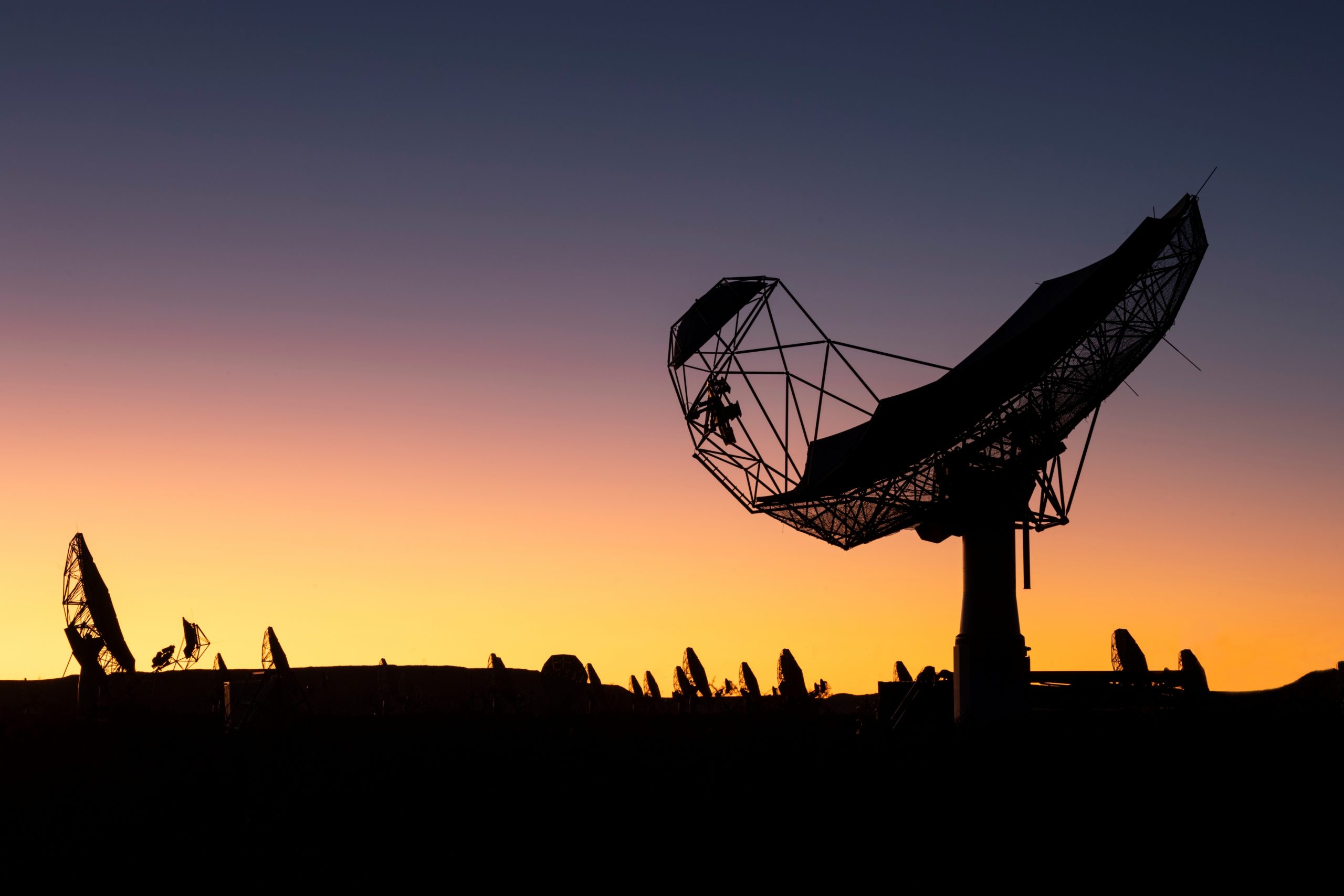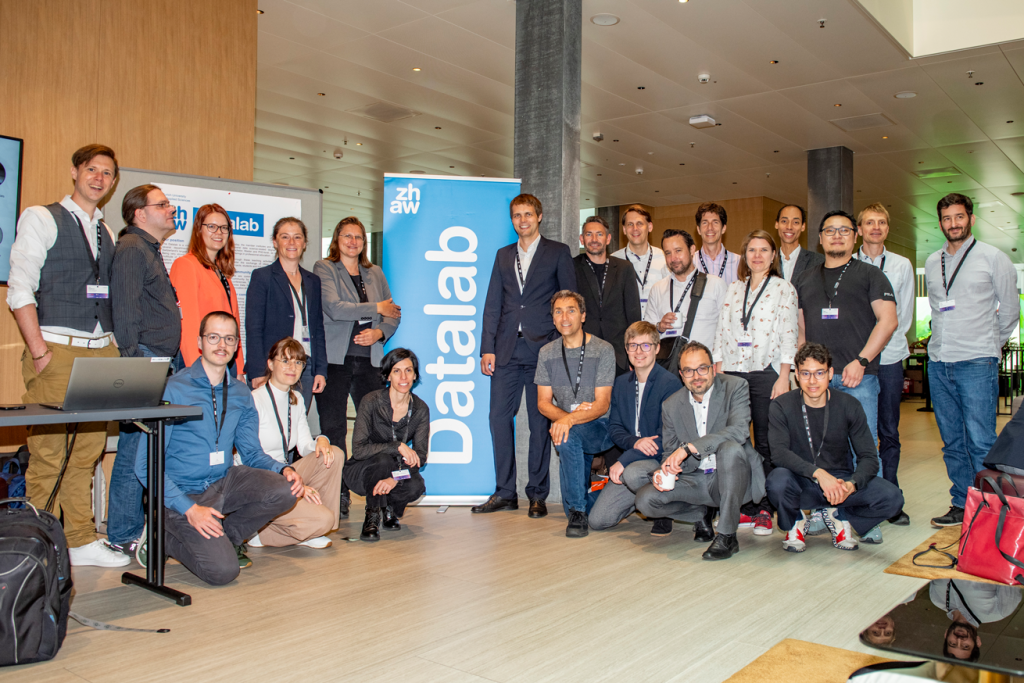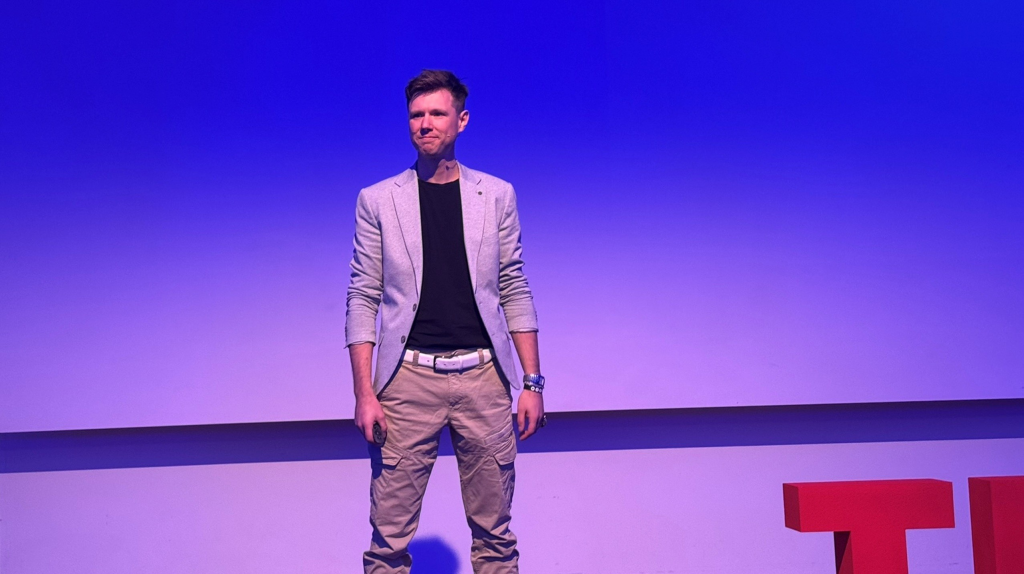A team of the ZHAW is contributing with their research to the Square Kilometre Array Observatory (SKAO), an international organisation that is building two of the largest radio telescopes in the world. The Swiss consortium for the SKAO (SKACH), comprised of ten Swiss institutions, will host an event at the ZHAW on 25-27 August 2025. In the interview, researchers Elena Gavagnin, Philipp Denzel and Frank-Peter Schilling share insights into their projects.
Teaser image: SKAO/Max Alexander
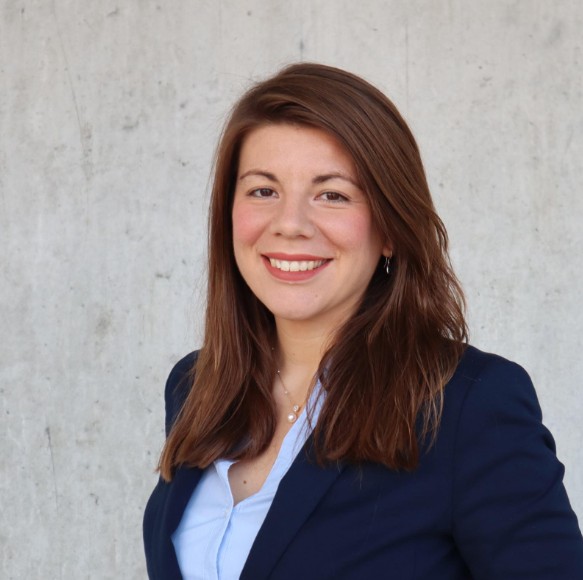
DFL community member Elena Gavagnin has a background in astrophysics and is co-Head of the group Information Systems and Technologies and senior lecturer of machine learning at the ZHAW Institute of Business Information Technology (IWI), and associate faculty at the ZHAW Centre for Artificial Intelligence. She leads the project “Square Kilometre Array: Mock-observations via generative deep learning (GenAI4SKA)” in which she and a team from the School of Engineering use AI to produce realistic simulations of objects in our universe. Elena Gavagnin applies her knowledge in machine learning also in other areas, for example in a DFF-Project funded by ZHAW digital on toxicity in video games.
Frank-Peter Schilling is deputy director of the ZHAW Centre for Artificial Intelligence (CAI), leader of the Intelligent Vision Systems Group and coordinator of the PhD Programme in Data Science between ZHAW and UZH. He has the deputy lead of the GenAI4SKA project.

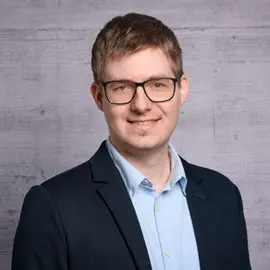
Philipp Denzel is an AI and machine learning researcher, lecturer at the ZHAW Centre for Artificial Intelligence (CAI), and member or deputy leader of several AI projects. As a trained astrophysicist, he leverages his knowledge to apply the latest AI methodologies to cosmological simulations and astronomical observations to develop novel scientific data analysis techniques for the SKAO.
What is the Square Kilometre Array Observatory (SKAO)?
Elena: The Observatory is named like this, because its two telescopes will spread over vast remote areas. It will consist of hundreds of dishes in South Africa and thousands of antennas in Australia. The size and sensitivity of the telescopes will allow the SKAO to detect faint radio signals from billions of light years away and map the sky up to a hundred times faster than other state-of-the-art radio telescopes. This means that scientists will be able to observe and measure the universe in ways never before possible. With the SKA telescopes, scientists can gain insights into the early periods of the universe, the origins of the first stars and galaxies, the role of dark matter, cosmic magnetism, study Earth-like planets that are hundreds of thousands of light years away, and much more.
The design of the SKAO was truly a global effort – it took hundreds of engineers and scientists from 20 countries. The construction will take 8 years and started last year. The two telescopes SKA-Low (in Australia) and SKA-Mid (in South Africa) produced already some very first images.
How is ZHAW involved in this international project?
Elena: We are contributing our expertise in AI and machine learning. Since astrophysics cannot count on experiments to show how galaxies form, for example, scientists rely on simulations based on the laws of physics. However, the results of these simulations represent an idealised version of the astrophysical objects we have in the Universe. Telescopes provide observations far away from these “perfect” representations. Our team uses AI and machine learning to compare these ideal simulations with what the SKAO instruments will observe in reality. We also collaborate with the University of Zurich, which is in charge of providing the simulations, the FHNW, which is developing a digital twin of the actual telescope and other institutions such as ETH Zurich, EPFL, University of Basel, University of Geneva, the University of Applied Sciences and Arts Western Switzerland and the Swiss National Supercomputing Centre (CSCS).
Tell us more about your project. What can you infer from the comparison of an AI simulation with the real observation?
Elena: When we get the real observation of a galaxy, we can learn what the perfect galaxy behind it would look like and infer properties from it, for example the dark matter distribution. To do this, we have a huge catalogue of simulated gas – the matter we see – and dark matter maps – the component of a galaxy that we cannot see. Our model is trained to reproduce the gas map when we give it the dark matter map and vice versa. Additionally, we apply the same bidirectional approach to other physical domains, such as the distribution of stars and the magnetic fields within the galaxy. This is like predicting the colour of an image from many black and white images.
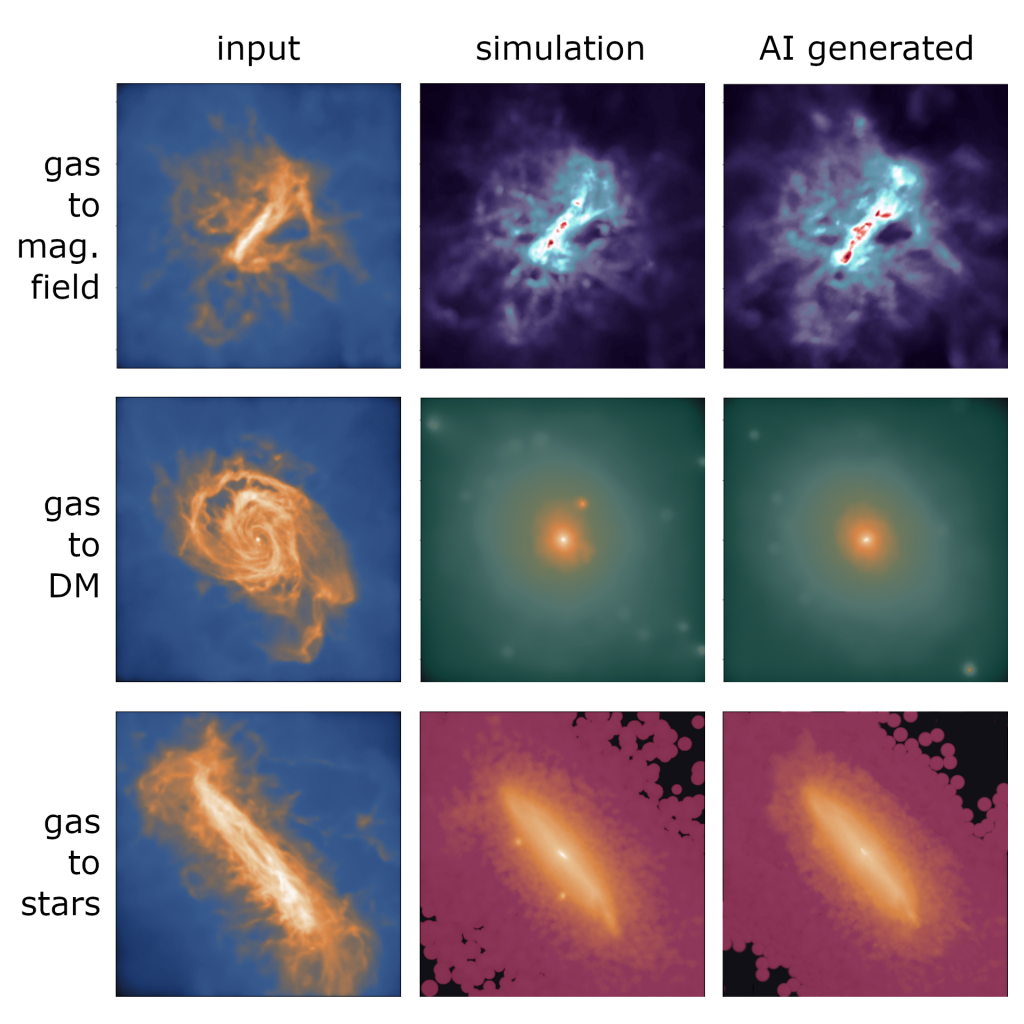
Image: ZHAW SKACH Team.
What is the current status of your project?
Philipp: We have developed advanced generative deep learning models that in unison can predict a galaxy’s full physical structure from theoretical quantities. For instance, if we’re given a “perfect” star map of a galaxy, our models can estimate all other galaxy components like its dark matter distribution or magnetic field strength – without the need for time-consuming, expensive simulations.
Real telescope data, however, is rarely perfect. Observations are often affected by noise, such as instrumental effects or interference from satellites. We’re currently working on enhancing our models to account for these effects, bridging the gap between theoretical predictions and real-world observations.
When the SKAO telescopes begin operations, they will produce an overwhelming volume of data – far more than any human could study in a lifetime. Our models could help process this flood of information autonomously, building theoretical representations of galaxies and flagging the most exciting discoveries for closer investigation.
What else came out of the project?
Frank: We have applied the same generative AI models which we used to transform images of galaxies also in the domain of medical imaging, where we have partnered with Varian Medical Systems in the context of an Innosuisse project. There, these so-called diffusion models are employed to remove artifacts and improve image quality in low-dose cone-beam computed tomography (CBCT). This can help doctors to better treat cancer patients undergoing radiation therapy, for example. This application in the medical domain is a very nice synergy between two very different disciplines. In addition, we have carried out several Bachelor and Master thesis projects in the extended context of the GenAI4SKA project.
What is happening at the SKA Days in Summer?
Elena: On the 25th, 26th, and 27th of August 2025, the ZHAW will host the 9th edition of the Swiss SKA Days. It is a huge honour for us, as it is the flagship event in Switzerland dedicated to SKA, the future world’s largest and most advanced radio telescope. The event will feature presentations on the status of this international project and different project groups (astrophysics, data science, high performance) will share their updates.
From ZHAW, the rector, as well as the deans of the School of Management and Law, and of the School of Engineering will participate. We look forward to welcoming representatives from the SKAO Headquarters, the Swiss State Secretariat for Education, Research and Innovation (SERI) and more than 100 participants from national and international institutions. For reference, last year’s edition welcomed attendees from China, South Africa, Australia, India, the United States, United Kingdom, France, and Italy.
